Ask the Specialist: Exercising in the Zone at Home
By Maritza Dominguez, PhD, MPT, CBIS

“Movement is BIG medicine; it’s the signal to every cell in our bodies that no matter what kind of damage we’ve suffered, we’re ready to rebuild and move away from death and back toward life.”
Christopher McDougall, “Running with Sherman”
Like many things in life, you want to have a balance—and the same is true for exercise. Studies show that aerobic exercise can help the brain recover after it has been injured. In fact, moderate strength training not only improves muscle function, but it increases blood flow to your brain and helps with neuroplasticity, which allows our brains to grow and make new connections.
Many brain injury survivors struggle to add exercise into their daily routines because of limitations such as transportation to a gym and a general lack of resources and knowledge around exercise. But, you can get your daily dose of exercise at home.
After you have been cleared by your physician to begin an exercise program, you can start getting more active. Research shows the best exercise prescription is as follows: Try to exercise 3 to 4 times per week for 30-minutes or more and work hard enough to create an aerobic response or break a sweat.
An aerobic response is when you hit 65-75% of your max heart rate (MHR).
Follow these steps to find your Target Heart Rate and get into The Zone at Home (see chart below):
- To find your MHR: Subtract your age from 220.
- Multiply your MHR times 0.65 to find 65% of your target heart rate (Zone 2).
- Multiply your MHR times 0.75 to find 75% of your target heart rate (Zone 3).
Example for a 62 year old person:
- 220 – 62 years = 158 beats per minute (bpm). 158 bpm is the MHR.
- Multiply 158 x 0.65 = 103 bpm. 103 bpm = Zone 2
- Multiply 158 x 0.75 = 119 bpm. 119 bpm = Zone 3

Practical steps to start exercising NOW:
- Set a schedule for exercise on Monday, Wednesday, Friday and one day during the weekend.
- If 30-minutes of exercise is out of your range at this time then split it into 3 chunks of 10-minutes. For example, you can complete a 10-minute workout in the morning, then another one before lunch, and then another one before dinner.
- Get a pulse oximeter and/or smart watch to monitor your heart rate. If you don’t have access to heart rate monitors, just remember to “break a sweat.”
- Use your technologies. You can search for workouts on YouTube. Paula B and Yoga by Adriene are great places to start. There are also apps for timers and workouts to keep you on track. W.O.D Generator and FitOn are two great apps to start with.
- You don’t need an app or video to start. You can do this Tabata Challenge in your home: Do each exercise pictured for 20-seconds. When you finish, take a 10-second break and do them again. Repeat the series for up to 8 rounds! Once you get more comfortable, you can track how many reps you do in each round. Try to get a little faster each week.
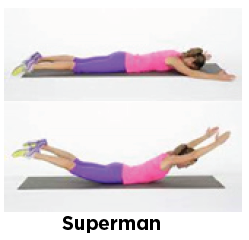
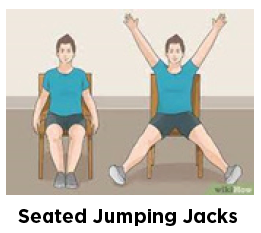

References:
Physical Activity Guidelines Advisory Committee. Physical Activity Guidelines Advisory Committee Report. Washington, DC: U.S. Dept. of Health and Human Services; 2008.
National Center on Health, Physical Activity and Disability. Addressing Barriers. https://www.nchpad.org/1246/5929/A~Proactive~Approach~to~Inclusive~Fitness. Accessed March 2, 2022.
Miczak, K. Exercise After Traumatic Brain Injury Fact Sheet; APTA Neuro Section, 2015. Hamilton, M; Williams, G; Bryant, A; et al. Which factors influence the activity levels of individuals with traumatic brain injury when they are first discharged home from the hospital? Brain Inj. 2015; 29, 1572-1580.
Want to suggest a topic? Email us at braininjury@uams.edu.
Survivor Story: Cassandra Daugherty
As Told to Benjamin Waldrum
“Without my family, I know I wouldn’t be where I am today.”
Cassandra Daugherty
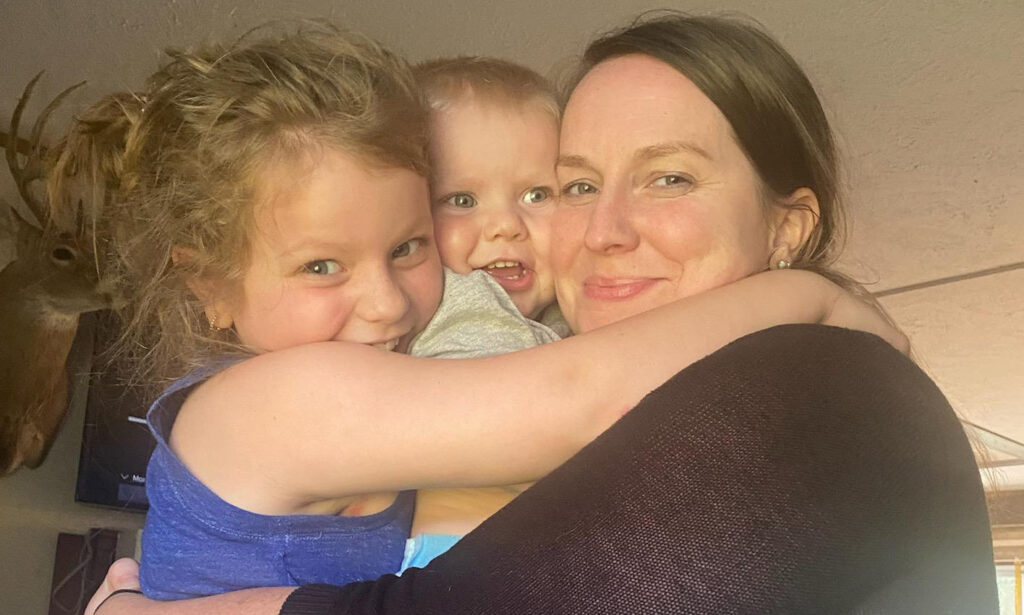
On Feb. 18, 2006, Cassandra Daugherty was riding in the passenger seat of her car, with a friend driving. It was a snow day for Bentonville High School, as a cold front had swept through that week and left just enough ice patches on the roads to make travel difficult.
The car drove over a patch of black ice, swerved off the road and through the median into opposing traffic. A tow truck plowed into the passenger side where Daugherty was seated.
She was airlifted from the wreck to Mercy Medical Center in Bentonville, stabilized, and then airlifted again to Cox Medical Center South in Springfield, Missouri.
“I have a severe traumatic brain injury (TBI),” she said. “From my understanding, it has affected my whole brain pretty equally. I still have soreness and pain in my back and jaw – my jaw was broken in three places. It has been 16 years, but the injury is still there.”
She had what is called a closed head injury, which is an injury to the head that does not go through the skull. However, closed head injuries can include broken bones in the skull or face, as well as significant damage to the brain, including bruising or bleeding. Motor vehicle crashes are the single most common cause of TBIs in young adults.
Daugherty would awake nearly a month later from an induced coma. Once she awoke, she was transported to Arkansas Children’s in Little Rock, where she remained for 49 days.
She began a regimen of extensive speech, physical and occupational therapy at Arkansas Children’s, and then in Bentonville after returning home. There was a lot of catching up for her to do, including at school.
“While going to outpatient therapy, I had to make up the second semester of my junior year, so I had a home school teacher, Ms. Jan, during the summer after the accident,” she said. “She was the counselor at my high school, and a great friend now.”
Daugherty started her senior year with her class in the fall, including full eight-hour days as a student. On the surface, things appeared to be back to normal, but she was struggling.
“I was so fatigued,” she said. “I had an IEP and 504 plan to help me get through the coursework I needed to graduate.”
The Individualized Education Plan ensures that a child with a disability can receive specialized instruction and related services while in school. Section 504 of the U.S. Rehabilitation Act of 1973 provides students with disabilities accommodations, such as adjusted schedules, technology aids and extended time on assignments, to succeed.
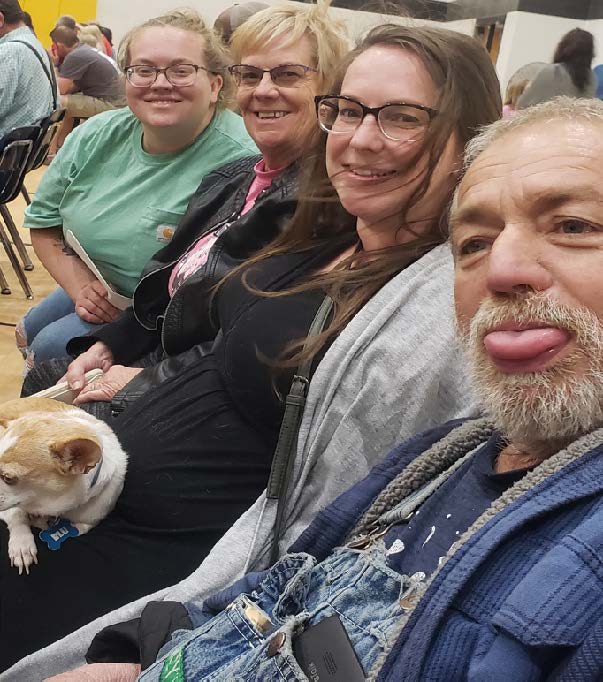
After returning to high school, she graduated on time with her class in 2007. Her family was her rock throughout the entire process – mom Jane, dad Keith, sister Makenzie, niece Ellie, nephew Walker Lee and her beloved dog, Blu.
“Family has been so very important,” she said. “Without my family, I know I wouldn’t be where I am today. Of course, the speech, occupational and physical therapy was all so very helpful in the beginning, but my mom, dad and sister have been such great support by giving me encouragement.”
Daugherty has fought her way back since the injury, pushing through “automatic negative thoughts” about the accident and difficulties and hard work that have followed since that day. She’s still fighting.
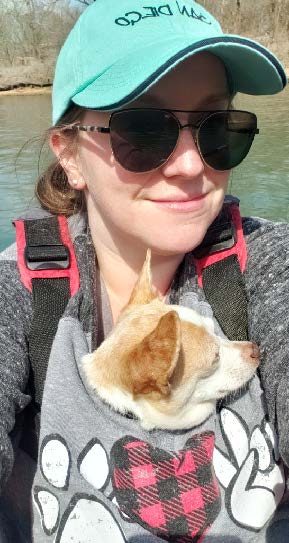
“It is all so difficult, to be honest – mostly emotional,” she said. “But I have achieved quite a bit. After 16 years, I have been able to compensate for most of the limitations caused by my injury.”
Over the past several years, Daugherty has been using her experience to help others. She attended the University of Arkansas and earned a Bachelor’s of Science in communications disorders in 2012 and a Master of Science degree in rehabilitation counseling in 2014. For nearly eight years, she has been a rehabilitation counselor with the Arkansas Division of Workforce Services, helping clients who need support and encouragement during their own recoveries.
“It was a long road, but I feel I am just in the right place,” she said. “I am being the best support I can be to others that are in the same season of their lives that I was in.”
Outside of work, she loves to go camping and kayaking, and often takes Blu with her. Her favorite spot is Indian Creek in Anderson, Missouri. She’s planning a camping trip to Colorado.
Her advice to other TBI survivors is to set goals and work hard to achieve them. “One word as advice: persistence,” she said. “If you don’t get it the first time, try, try again. Never give up! You can do anything you put your mind to, and I mean anything. Set your goals high and don’t quit.”
Want to share your story? Email us at braininjury@uams.edu.
Social Security Pointers: Get Your Social Security Benefit Statement (SSA-1099/SSA-1042S)
By Tonya Cater, Social Security Public Affairs Specialist
We’ve made getting your annual benefit statement even easier. The benefit statement, also known as the SSA-1099 or the SSA-1042S, is a tax form we mail each year in January to people who receive Social Security benefits. It shows the total amount of benefits you received from us in the previous year. You can use this information when you file your tax return, as it shows how much Social Security income to report to the Internal Revenue Service.
If you live in the United States and you need a replacement SSA-1099 or SSA-1042S, go online to get your instant, printable replacement form using your personal my Social Security account at www.ssa.gov/myaccount. Look for your replacement SSA-1099 or SSA-1042S for the previous tax year in your personal account after February 1.
If you don’t have access to a printer, you can save the document to your computer or email it to yourself. If you don’t have a my Social Security account, creating one is very easy to do and usually takes less than 10 minutes.
And that’s not all you can do with a personal account. If you receive benefits or have Medicare, your personal my Social Security account is also the best way to:
- Request a replacement Social Security number card
- Get your benefit verification letter
- Check your benefit and payment information
- Change your address and phone number
- Change your direct deposit information
- Request a replacement Medicare card
- Report your wages if you work and receive Social Security disability insurance or Supplemental Security Income benefits.
If you don’t have a personal my Social Security account, you can create one today at www.ssa.gov/myaccount.
Please be aware that past newsletter issues may contain outdated information. For the latest updates on resources and events, visit our website or contact us at braininjury@uams.edu with any questions.
